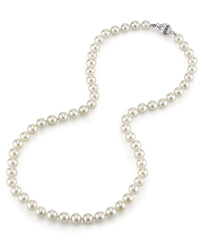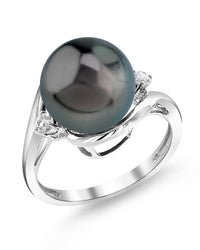Pearl lovers are always on the lookout for the best Akoya pearls, and for most shoppers, their research will eventually lead them to make a Mikimoto vs Hanadama Akoya comparison.
Both Mikimoto and Hanadama pearls are great choices, but comparing the two isn’t straightforward, because these terms describe two very different things.
While both are cultured pearls, Mikimoto is a pearl jewelry brand and Hanadama is a grade of very high quality Akoya pearls.
If you’re looking for a Mikimoto alternative, but still want stunning, lustrous Akoya pearls, the Hanadamas available from other brands are an excellent place to start. And if you want to ensure you get top quality pearls, it’s important to know what options are available, and how they measure up against each other.
Make no mistake — finding beautiful pearls doesn’t have to mean depending on a big brand name like Mikimoto.
While Mikimoto offers very nice pearls, you can find equally exquisite Hanadama pearls from reputable online pearl jewelers like Pearls of Joy. So, let’s compare the pearls offered by Mikimoto with the gorgeous Hanadama pearls available elsewhere.













